The first Soviet truck turned 95
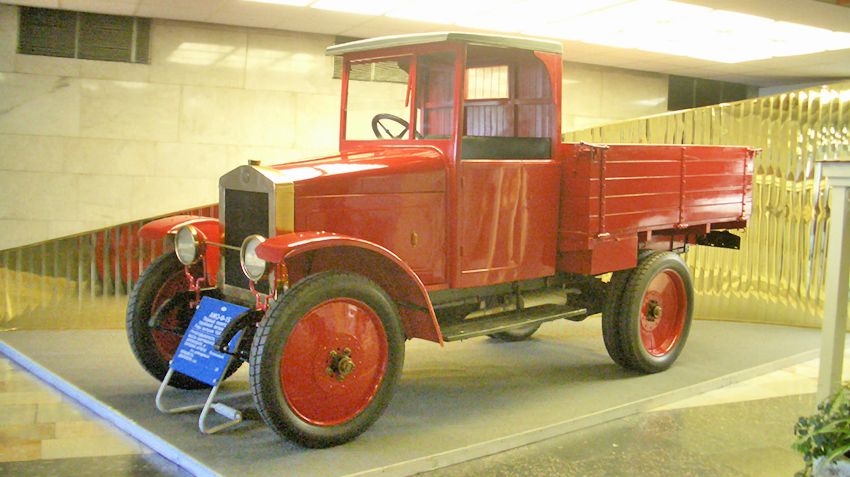
18 November 2019
In November 1924 there was the first Soviet car AMO-f-15
The seventh of November, 1924, on red square has passed a convoy of 10 trucks AMO-f-15 red – the firstborn of the Soviet automobile industry.
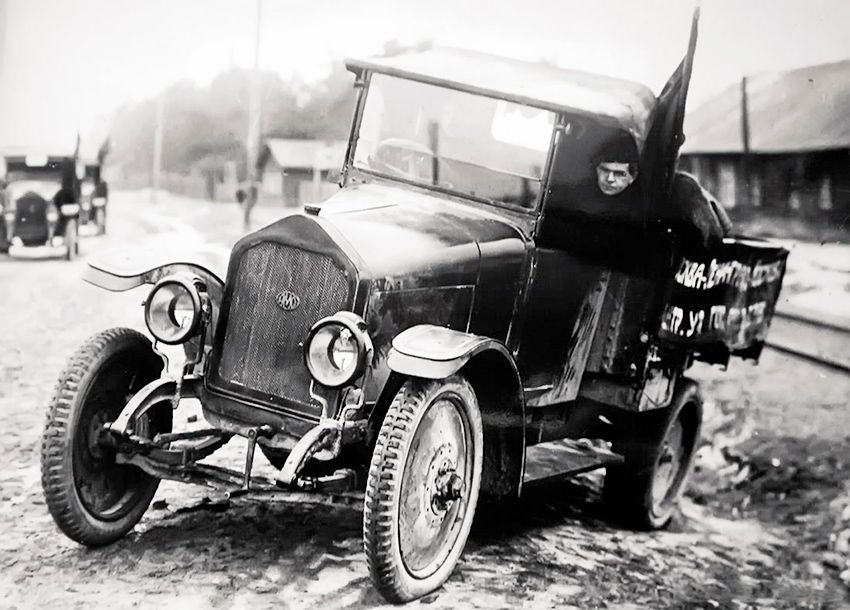
The first Soviet truck AMO-f-15 going to my first rally
In Soviet times it was believed that the Russian Empire of industry as such was not his birth took place exclusively in the first five years (1928-1932). However, as conclusively proved by historians – the auto industry in pre-revolutionary Russia was the auto industry, though in its infancy (one of those times most famous brand "Russo-Balt", created car division in the Russian-Baltic wagon factory was located in Riga).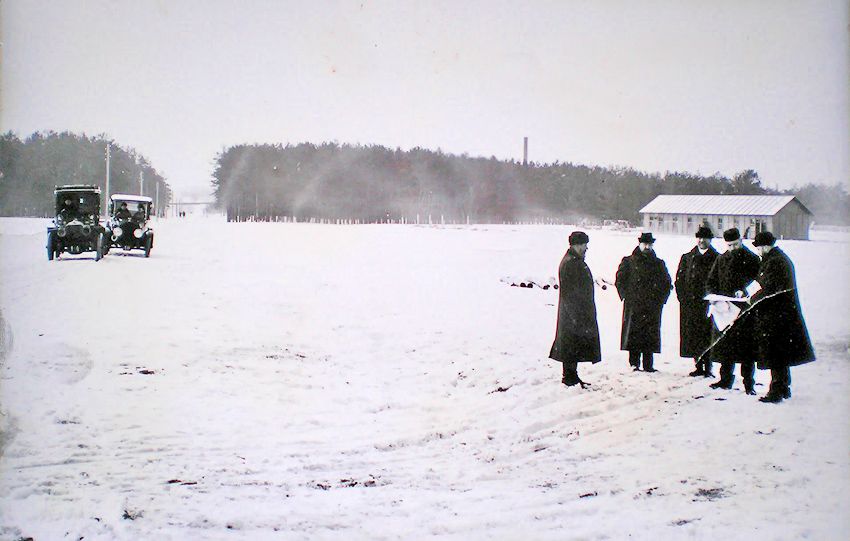
Brothers Stepan and Sergey Pavlovich Ryabushinsky on the site of the future plant AMO in tyufelevoy grove
During the First world war the Tsarist government was forced to attend to the creation of a national Russian automobile industry whose products are needed for the front, but of the six laid down in the 1916 automobile factories (one of them was created just on the basis of the evacuated equipment RBUS) to a high stage of readiness to a turning point for our country in 1917 was ready AMO (the"Partnership on equal footing automobile Moscow society"), founded the trading house "Kuznetsov, Ryabushinsky", which took over a military contract (the price of 27 million gold rubles) for the supply of 1500 units of 1.5-ton trucks FIAT-15ter. No time with the construction contract for the first term of the delivery – 150 trucks in March 1917 (the equipment for the plant had to be imported from the USA and Siberia – thus was obtained about 500 of the latest American machine tools)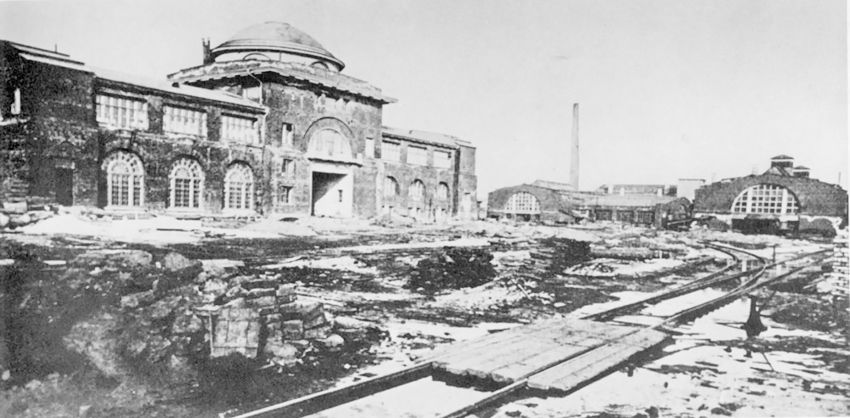
Factory AMO in the beginning of 1917 (on the left survived until the building of the plant on the right machine-Assembly Department)
Ryabushinsky purchased Assembly kits of trucks in Italy and from spring 1917 to spring 1919 AMO trucks FIAT 15ter was going to Typelevel the grove at Moscow from imported parts (a total of 1319 units). In the future, equipped with 3/4 of the factory (nationalised of the Supreme economic Council in August 1918 and a year later, along with other unfinished plants included in the so-called "AutoTest", 1921 – Zugaza) five years was engaged in the repair and restoration of motley automotive technology inherited Civil war devastated the country. By the end of 1922 the company had already produced 75% of the parts, including the entire propulsion system, 3-ton American truck White TAD (which was even called white AMO) and fully intended to localize it, but then the decision to produce his own model was changed in favour of the more popular of the Fiat lorry, which had full documentation, including two test sample FIAT 15ter lorry. In the 1922/23 financial year, the Council of Labor and Defense (STO) AMO appropriated the necessary funds for the reorganization of production, and the newly created state planning Commission in June of that year identified for AMO production job in 1923-1927 and traditions of those years on 30 April of 1923 the factory AMO was named after the Italian Communist Pietro Ferrero. However, the deficit is not so much equipment, how many engineers, technicians and skilled workers to move to full production cycle was only in the autumn of 1924.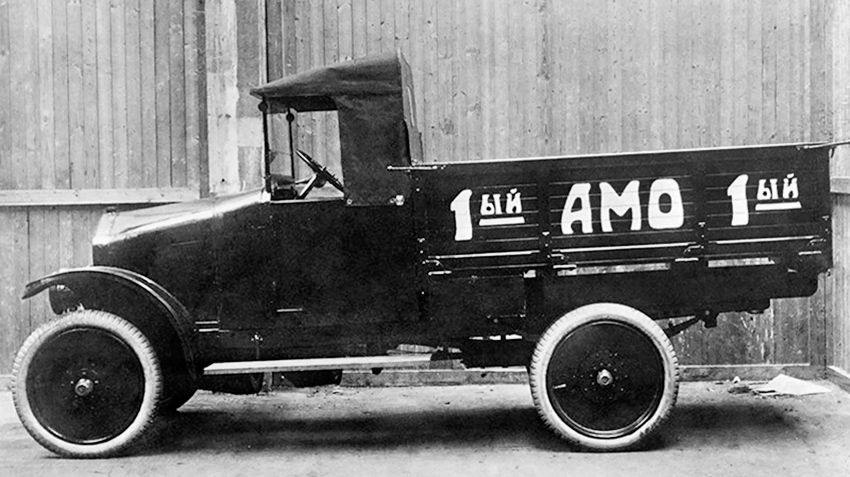
The first AMO-f-15 with a canvas roof and starting the motor only "a curve starter"
The first truck AMO-f-15 was assembled on the night of 1924, largely thanks to the enthusiasm of the workers themselves (corps of engineers incorporated of the "bourgeois specialists" was configured much more critical). The last 10 cars were assembled and painted by the morning of 7 November the workers went to the demonstration on the trucks, whose wet paint is still sticking to hands. However, this convoy became the first post-revolutionary country, not imported, assembled completely on their own, which became a significant phenomenon in the restoring at the expense of the NEP the country.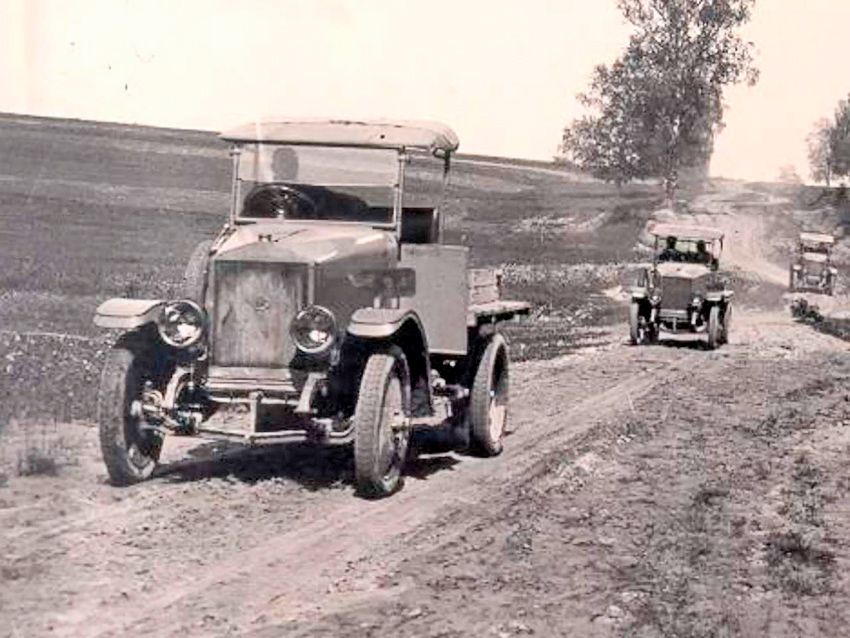
AMO-f-15 immediately began to participate in the rally, which confirmed the quality of cars of the Russian manufacture
Already on November 25 at noon in red square was the start of the first Soviet car test run on the route Moscow – Tver – Vyshny Volochek – Novgorod – Leningrad – Luga – Vitebsk – Smolensk – Roslavl – Moscow, which went three cars in the top ten (No. 1, No. 8 and No. 10). The rally was quite successful, confirming the satisfactory quality of products of AMO. Serial production of the truck AMO-f-15 began in March of 1925 to the end of the year it was made 113 cars, and in 1926 – 342 lorry.In 1925, the factory AMO was renamed the 1st State automotive plant. In 1927, he was appointed its Director the legendary I. A. Likhachev. Production at AMO was gradually increased and by 1931 had produced a total of 6383 (according to others 6971 units) AMO-f-15, of which 2590 units. was necessary for the 1929/30 financial year.
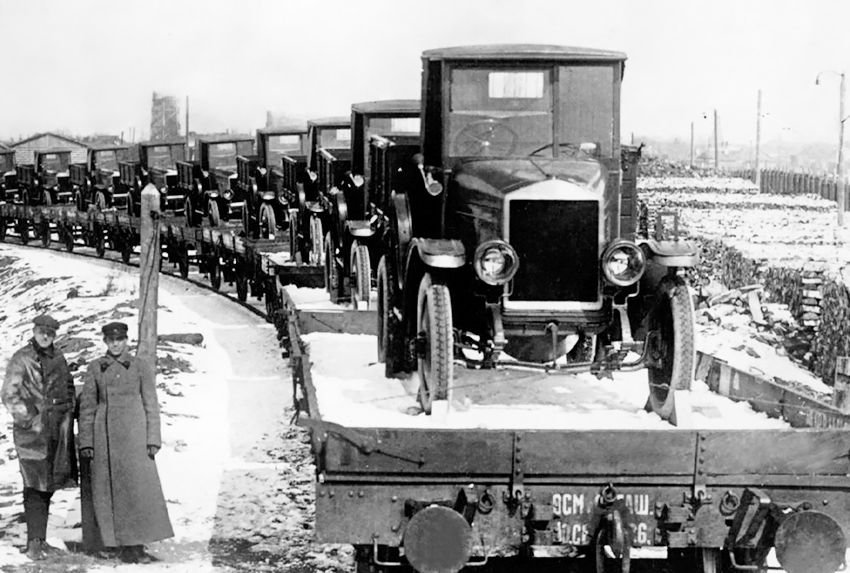
By the end of the 1920s, delivery of AMO become more or less stable machines began to ship whole trains (photo 1928)
In parallel, improved design and AMO-f-15 which has experienced in its relatively short production cycle two upgrades. So, the first upgrade (respectively for AMO-f-15 the second series 1926-192 years) brought hard cab with side Windows, internal Parking brake lever, simplified steering, dry disc clutch, petrol tank with a vacuum pump. The second modernization (third series 1928-1931 gg.) gave a battery, electric lights, electric starter and horn, but the pump refused and returned the tank to its original place above the engine to the fuel flowed to the carburetor by gravity.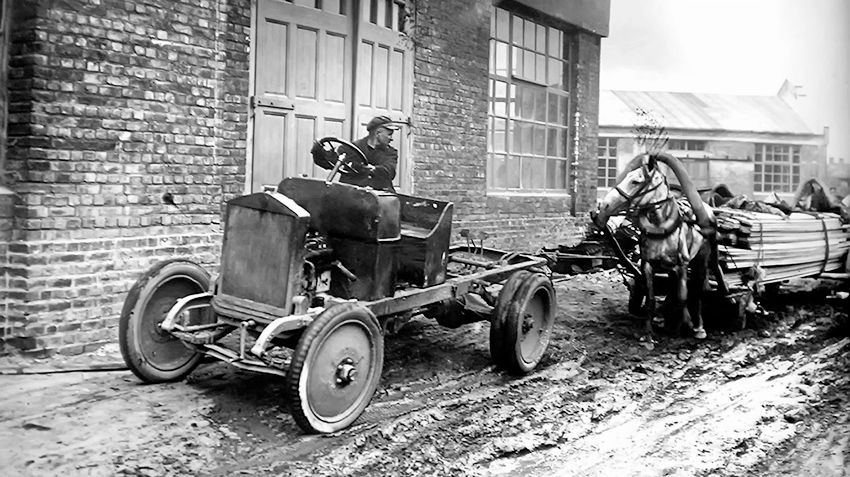
Chassis AMO-f-15СП (with two control stations) for armored car BA-27, pulls out of the thick mud of the factory yard cartage dissolution of the boards of bodies
Of course, not all technological and production processes at the AMO was adjusted and brought at least to a minimum acceptable level from the point of view of the economy. So the crankshaft is the original "cut" is not a common method of forging, and were drilled and cut with chisels spaced from the contours of the metal of the casting and then drove fine machining. As a result, the cost of the car, whose design contained a large amount of details from nonferrous metals, but a significant portion of parts and components and manufactured in a practically artisanal methods, were too large: so the first dozen cars in 1924 the goal has a cost of 18 000 rubles for the car, the second generation cost 12 786 rubles, and the third is 11 000 rubles.Although 1927/28 years the cost of the AMO-f-15 dropped to 8500 rubles, in those same years, a better performance on the truck Ford-AA in the form of kits with delivery in the Union, cost only 800-900 rubles (here is a good example of the benefits of Ford's system of flow line production before the stacker Amateur work, which, however, the European car industry was just beginning to get rid of – ed.).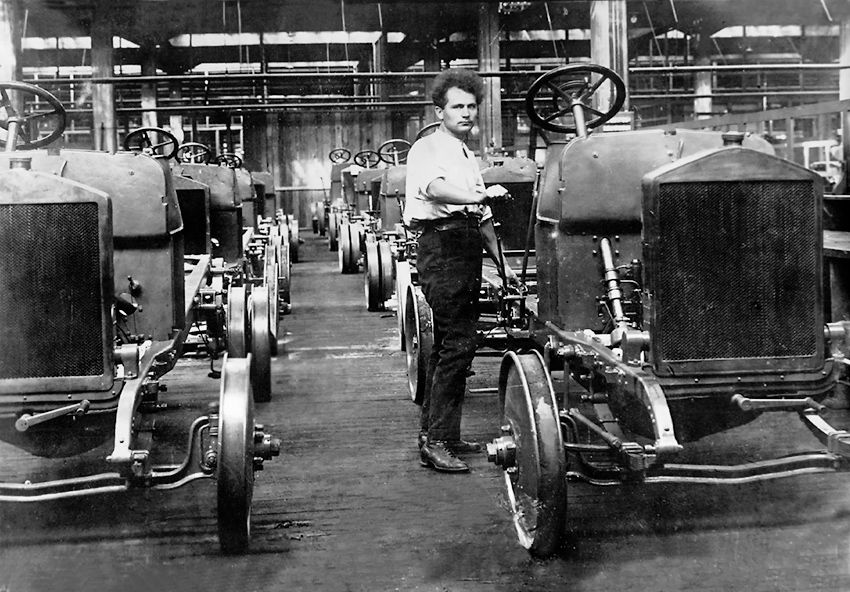
Slipway production and increased volumes of production are extremely tight and the country razvorachivatsya industrialization could not have to put up with it
Furthermore, the extent of staple production was very unsatisfactory to the country, strongly razvorachivatsya industrialization, and mechanization of the red army. Already in 1928, the need for fundamental reconstruction of the plant and the development of the modern model of the truck (for the further development of the structure f-15 – truck AMO-20 with increased up to 2 t load capacity was recognized as unpromising) became an urgent necessity, but that's another story.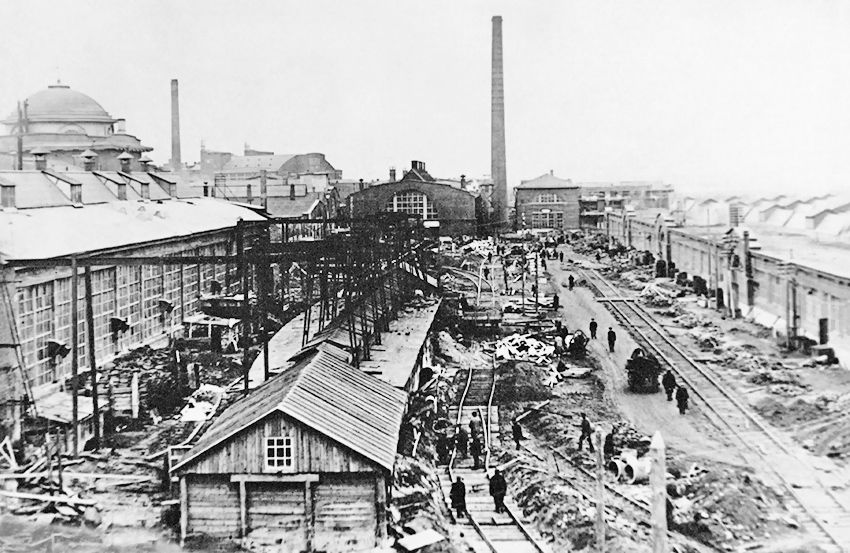
Reconstruction of the foundry AMO in the 1930s – the factory area is still in a primitive state
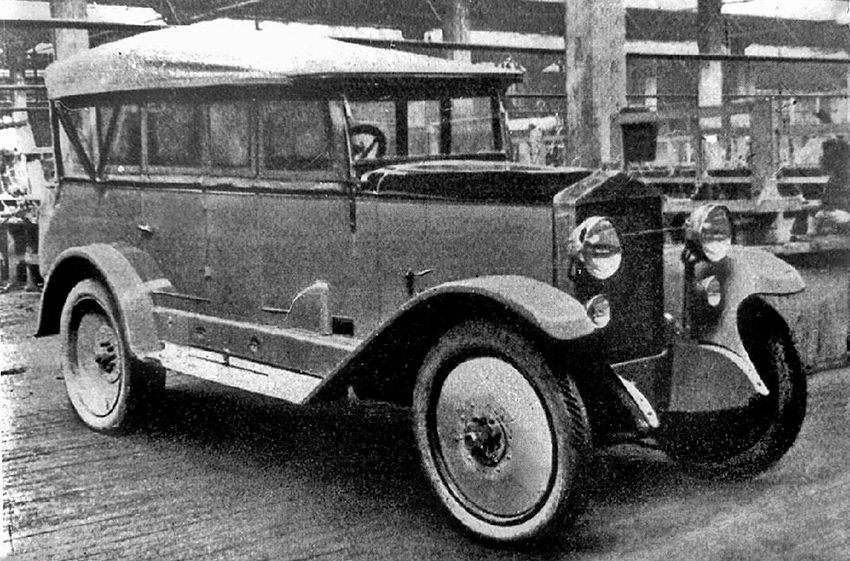
On the basis of the AMO-f-15 in 1927 even made a dozen staff cars
Himself AMO-f-15 its historic task fulfilled, becoming as a replacement raznomastnogo to limit the worn-out fleet of trucks (and some buses), and school for producers and "ekspluatatsionnika" (as it was then written and spoken – ed.).
The first-born of the Soviet automobile industry – lorry AMO-f-15 regularly drove the workers and red army men from the late 1920s until the middle of the 1930s
All AMO-f-15 being fairly reliable, although time-consuming and demanding service and bouncy with no load, however, had good endurance and maneuverability, honestly served his age (this machine was part of the army fleet and automotive educational institutions to mid-end of the 1930s, and in parts of the fire served, and after the great Patriotic war).
In parts of the fire line and fire the pumps on the basis of the AMO-f-15 held until the post-war era
There is no pre-war drivers were saying: "Car AMO – all machines mother."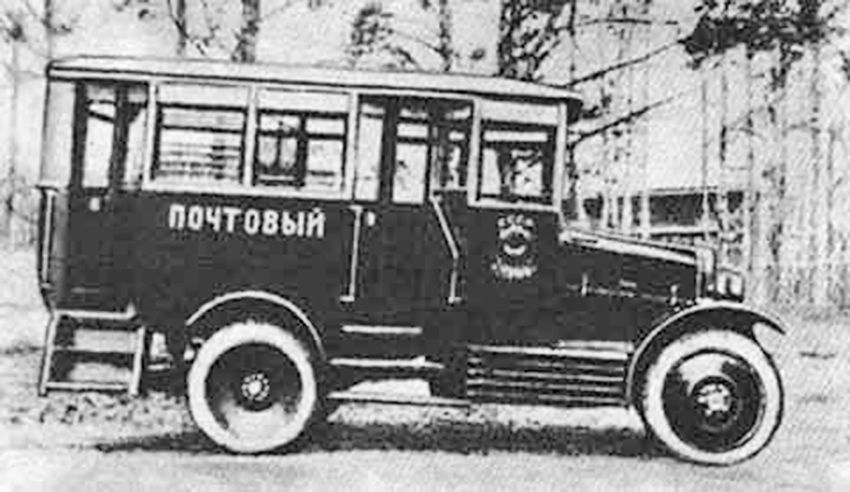
Did on the chassis of the AMO-f-15, and mail and
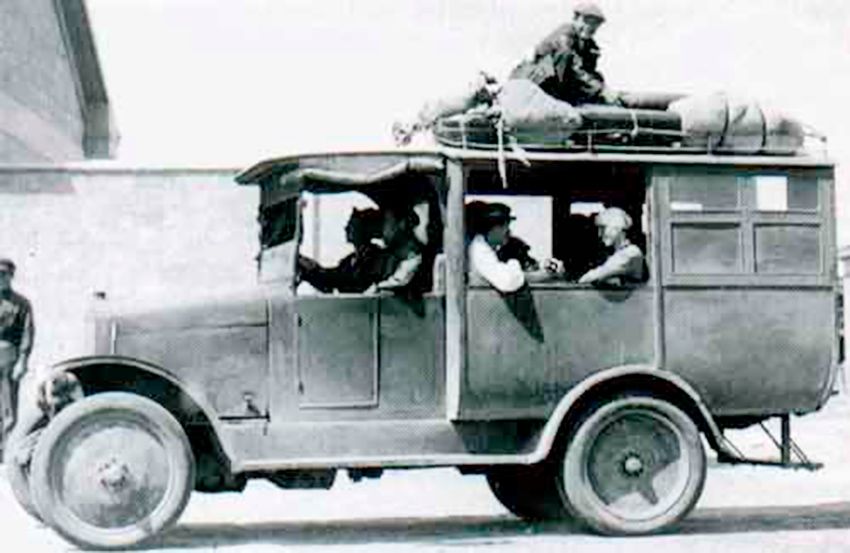
and regular postal and passenger buses,
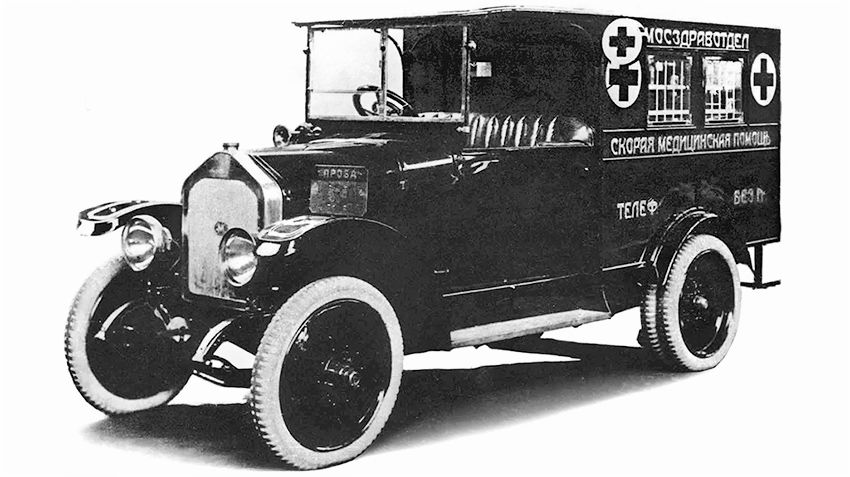
ambulances (for which suspension of the AMO-f-15 proved to be unacceptably hard) and even...
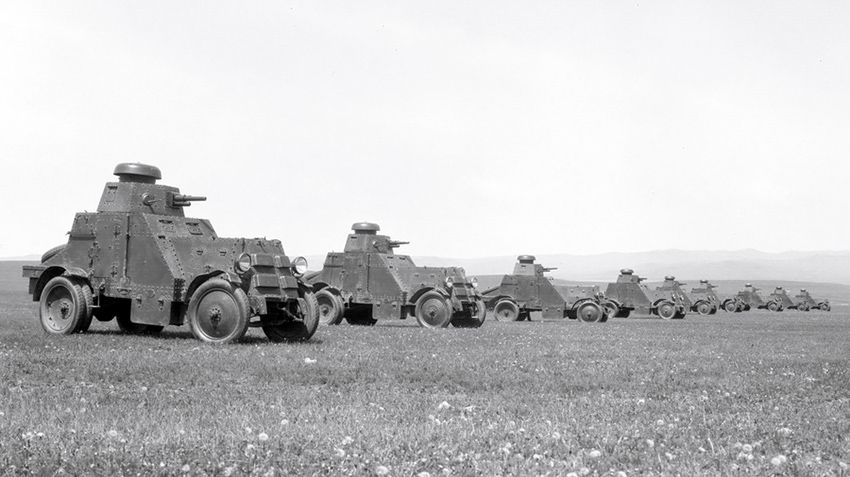
the first Soviet serial armored cars BA-27, which in 1928-1931 he built a 215 units.
At least one instance of the AMO-f-15, has been meticulously recreated by factory workers to the driving condition even for the 50th anniversary of the Soviet automobile (photo on the splash screen – ed.) have survived in the original collection of AMO ZIL, which, however, in recent years, in connection with the bankruptcy enterprises were transferred are distributed in storage in different organizations.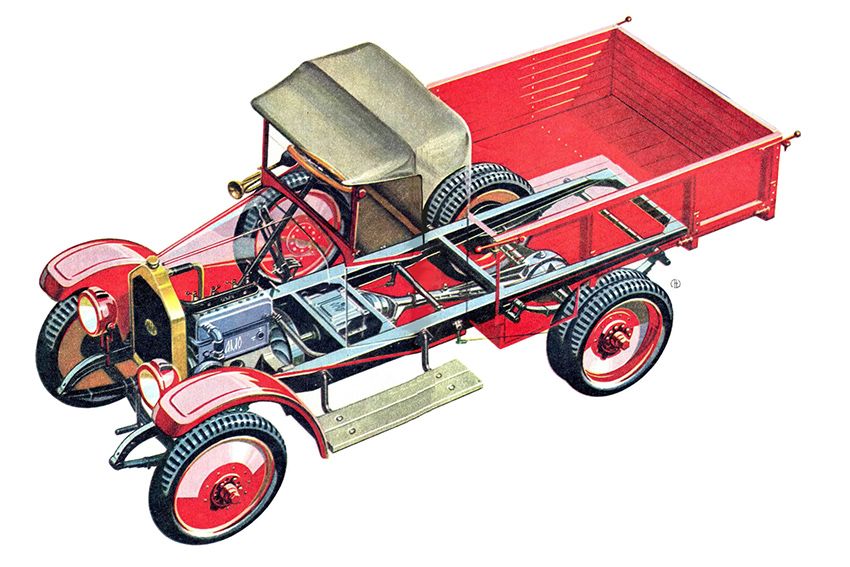
The x-ray diagram of the AMO-f-15 (figure Y. Dolmatovsky) shows how simple and at the same time, rational was arranged AMO-f-15 (dimensions: 5,1x1,7x2,25 m base: 3.07 m swam on OTO year of release)
Lorry AMO-f-15 was adapted for the domestic roads by the Italian truck FIAT-15ter, already had time to participate in the Italo-Turkish war 1911-12's. and on the roads of the First world (to improve the patency of it has reduced much speaking of the engine flywheel, by the way, he also served as a fan, stretching out the air from the radiator through the engine compartment in the closed condition of the sidewalls of the engine compartment and reinforced frame, ultimately the amount of alterations allowed to give the car its own index of the AMO-f-15 from Fiat-15). Service intervals on the AMO-f-150 does not exceed 500 km, and the chassis had to pricewat using 150-200 miles, mileage prior to repair was only 20-30 000 km.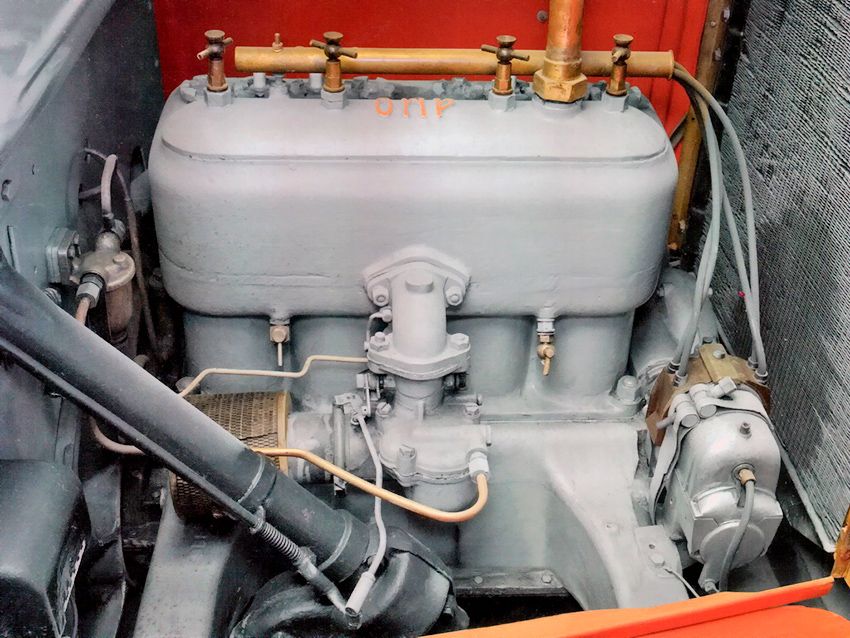
Four-cylinder engine AMO-f-15 a working volume of 4,4 l gave only 35 HP, it would not hurt to put it on armored cars and three-ton I-3 Yaroslavl plant
.
|
|
|
Element was not found.








